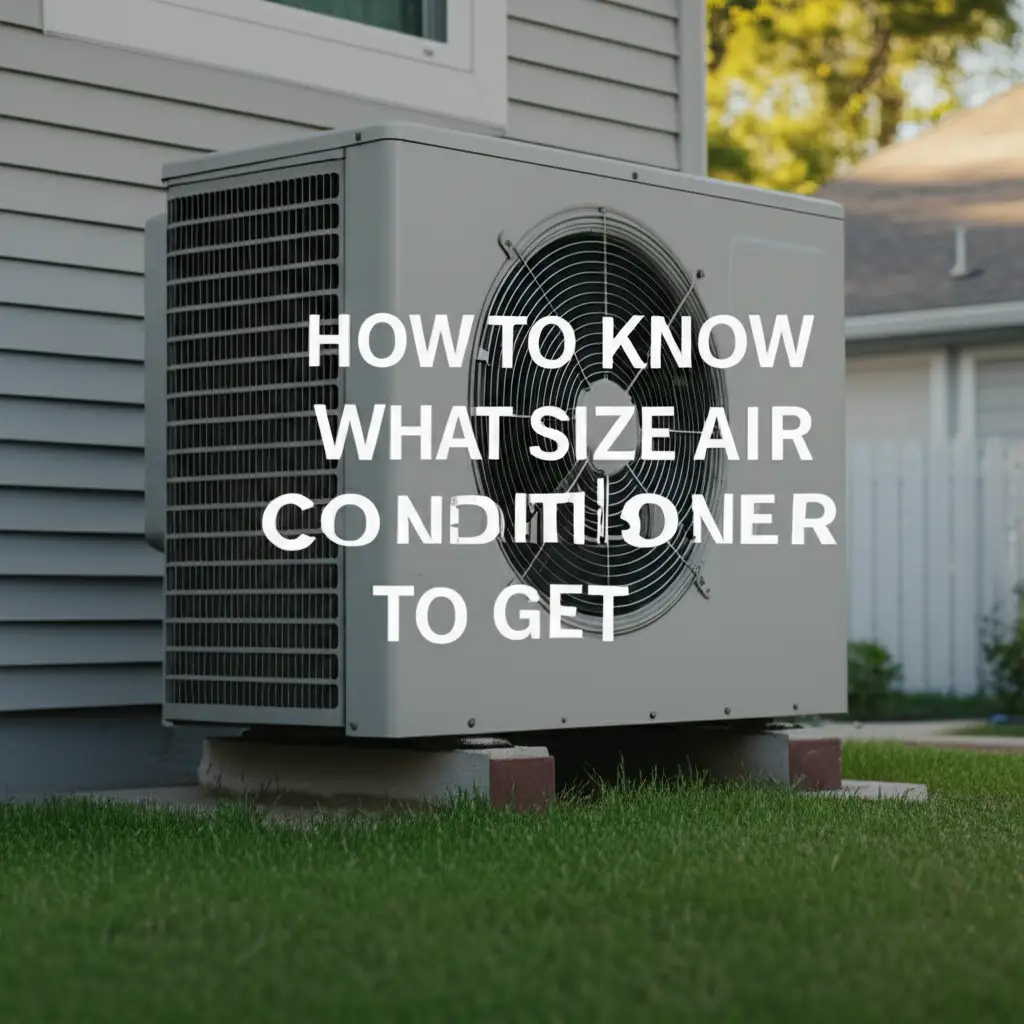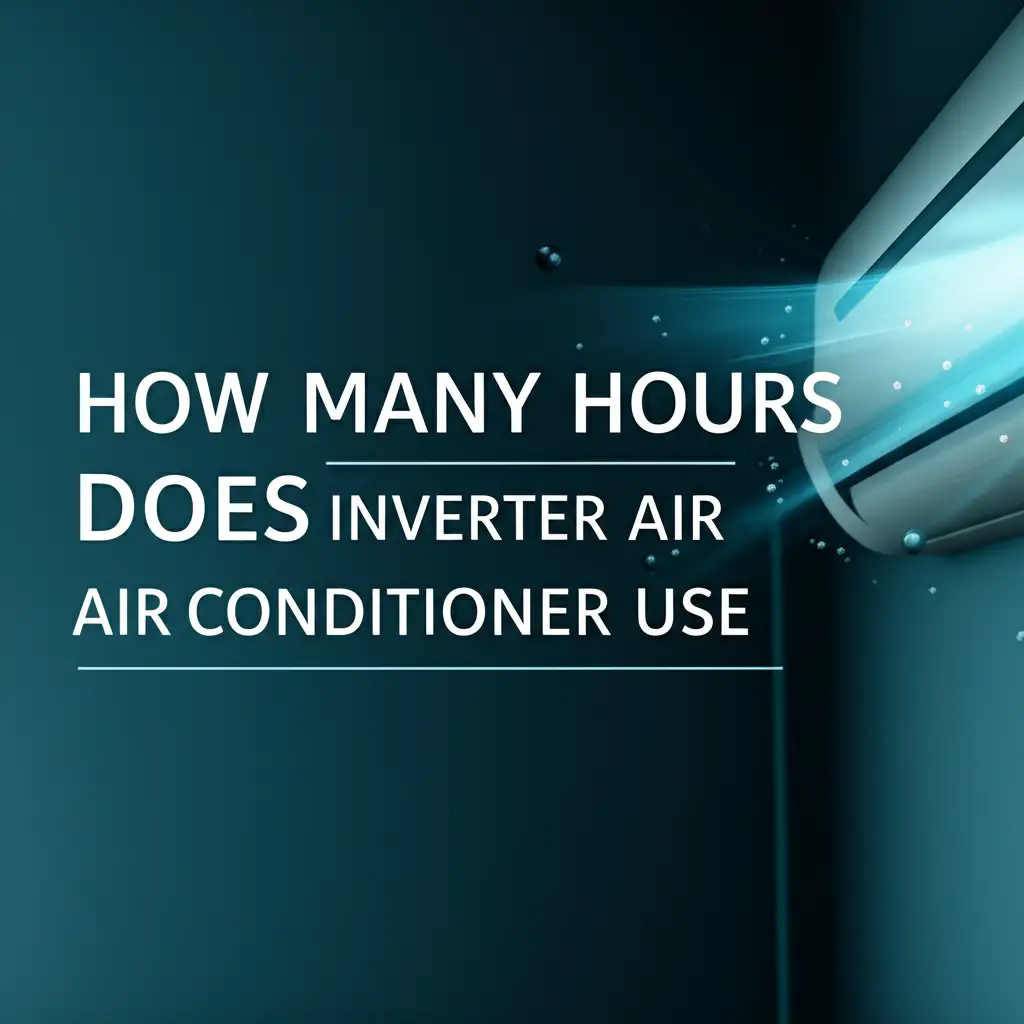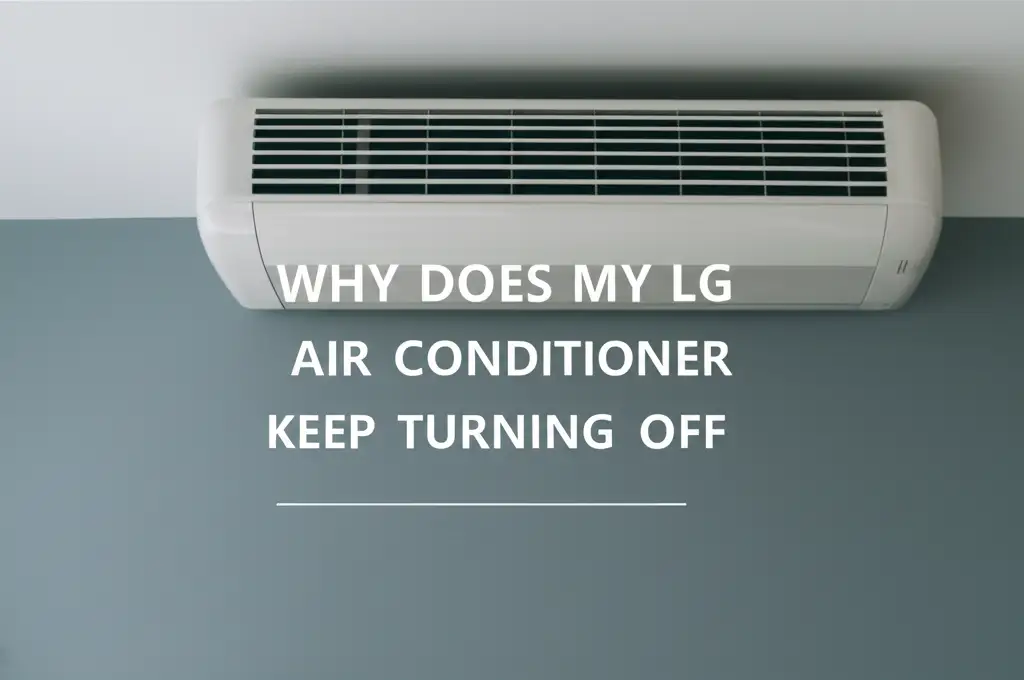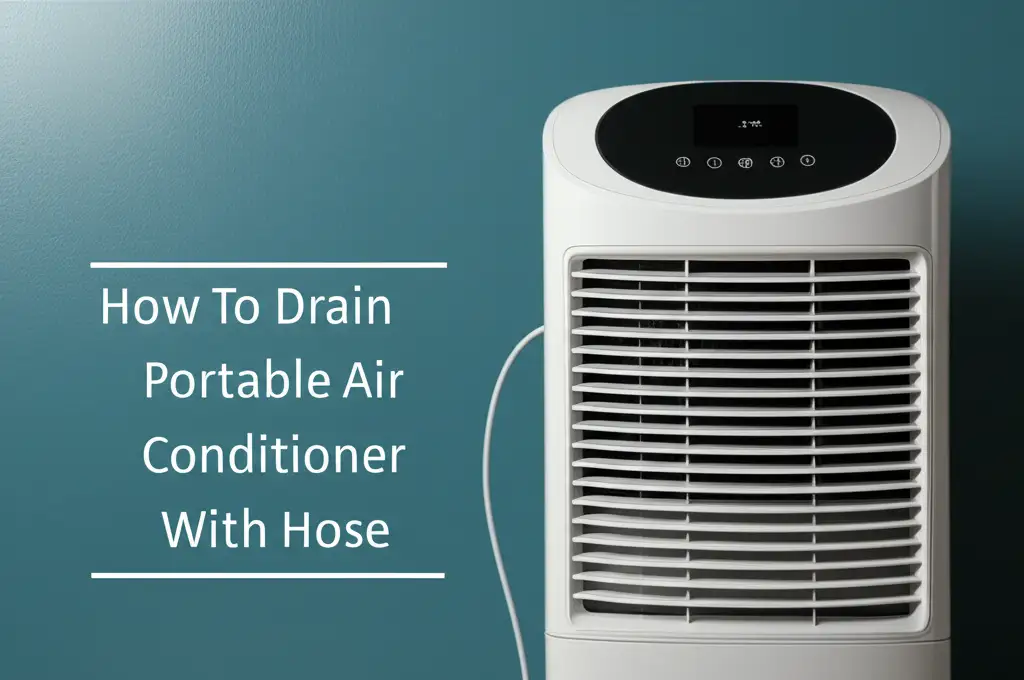· Davia Murnell · Home Improvement · 19 min read
Can You Use Window Air Conditioner In Wall
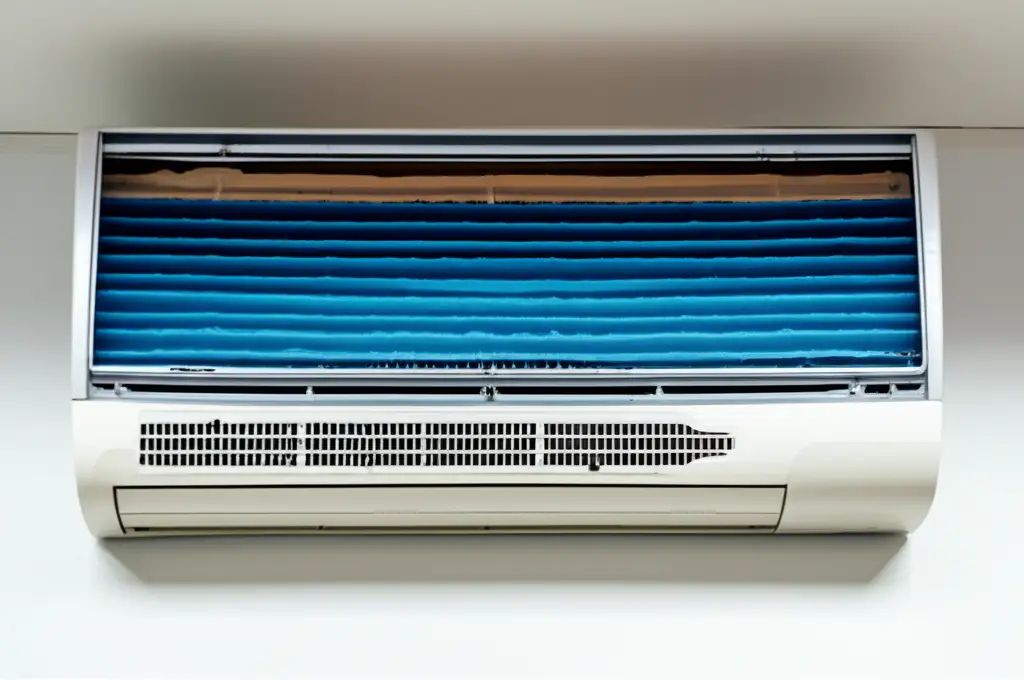
Transform Your Home Cooling: Can You Use Window Air Conditioner In Wall?
Imagine a sweltering summer day. Your home feels like an oven, and you dream of cool, crisp air. Many people turn to window air conditioners for relief. But what if a window is not the best spot for your unit? You might ask, “Can you use a window air conditioner in a wall?” This is a common question.
I’m here to tell you that, yes, it is often possible to install a window air conditioner directly into a wall opening. However, this is not a simple swap. It requires careful consideration, proper planning, and specific modifications. The process differs significantly from a standard window installation. This article will explain everything you need to know. We will discuss the differences between unit types, the challenges you might face, the installation process, and important safety tips. My goal is to help you decide if a wall installation is right for your cooling needs.
Takeaway
- Window AC units can be installed in a wall, but it is not ideal without proper modifications.
- Dedicated through-the-wall AC units are designed for wall installations.
- Key challenges include structural integrity, proper sealing, drainage, and electrical needs.
- Improper installation can lead to structural damage, leaks, mold, and reduced efficiency.
- Consider professional installation or dedicated through-the-wall units for best results.
Can you use a window air conditioner in a wall? Yes, you can install a window air conditioner in a wall, but it is typically more complex than a window installation. This method requires a precisely cut opening, a sturdy support frame, and careful sealing. Proper drainage and electrical connections are also critical for safe and efficient operation.
Understanding Window AC Units vs. Through-the-Wall Units
Before we dive into installation, it is important to understand the differences between unit types. Window air conditioners are designed to sit in a window frame. They typically have side vents and a sloped base for drainage. This design works well for windows.
Through-the-wall air conditioners, on the other hand, are built specifically for wall installation. They come with a sturdy sleeve that slides into a wall opening. Their design usually features flat sides and rear-facing vents. They also have a different drainage system that routes water out the back. This makes them much more suitable for wall use.
Using a window unit in a wall means adapting a unit not made for that purpose. You must ensure proper airflow around the unit. Blocking side vents, common in wall installations, reduces efficiency. You also need to manage condensate water. Window units often drain from the front or sides, which can be an issue when installed in a wall.
Consider the design elements. A window unit’s cabinet often slopes slightly downwards towards the back when installed in a window. This helps with drainage. When you install it in a wall, you must create that same slope for proper water removal. Without correct drainage, water can pool inside the unit or leak into your wall.
My experience shows that many people overlook these design differences. This can lead to problems later on. A through-the-wall unit is always the preferred choice for a wall opening. Its design already accounts for critical factors like venting, drainage, and structural support. If you’re interested in whether a window unit must be placed in a window, you can read more here: Does Window Air Conditioner Have to Be in Window.
The Feasibility and Challenges of Wall Installation
Installing a window AC unit into a wall is feasible, but it presents several challenges. It is not as simple as cutting a hole and sliding the unit in. You must plan carefully and address specific structural, drainage, and electrical needs. Overlooking any of these steps can lead to significant problems.
The primary challenge is adapting a unit designed for a window to a wall. Window units rely on the window frame for support and sealing. A wall installation requires building a custom support structure. You also need to create a weather-tight seal around the unit. This prevents air leaks, moisture intrusion, and pests.
Structural Considerations
Cutting a large opening in an exterior wall can compromise your home’s structural integrity. Walls contain studs that support the roof and upper floors. You cannot simply cut through these studs. You must build a header and side supports around the opening. This redirects the load and maintains the wall’s strength.
You also need to ensure the wall can bear the AC unit’s weight. Window units are heavy. The framing must be strong enough to hold the unit securely without sagging. Improper support can lead to the unit shifting, causing damage to the wall or the unit itself. It can even be a safety hazard.
Drainage and Sealing
Window AC units produce condensate water. This water needs a clear path to drain outside. As I mentioned, window units often rely on gravity and a slight tilt to drain from the back or sides. When installed in a wall, you must ensure this tilt is maintained. You may need to create a custom drip pan or extend the drainage path.
Sealing is another critical aspect. Air leaks around the unit reduce its efficiency. They also allow moisture and pests to enter your home. You need durable, weather-resistant materials to seal the gaps. This includes caulk, foam insulation, and weather stripping. A good seal keeps your home cool and dry.
Electrical Requirements
Air conditioners draw a lot of power. You must ensure your electrical circuit can handle the load. Most window AC units require a dedicated 15-amp or 20-amp circuit. Larger units might need a 240-volt circuit. Never plug a large AC unit into an overloaded circuit. This can trip breakers or even cause electrical fires.
If you do not have an appropriate outlet near the installation site, you will need an electrician to install one. This adds to the cost and complexity of the project. Always consult an expert if you are unsure about electrical work. For more information on installing window ACs through a wall, check out this guide: Can You Install Window Air Conditioner Through Wall.
Step-by-Step Guide to Installing a Window AC in a Wall (DIY vs. Pro)
Installing a window AC unit in a wall is a significant home improvement project. It requires careful planning and execution. While some experienced DIYers might attempt this, I highly recommend professional help. A professional ensures structural integrity, proper sealing, and correct electrical work.
If you choose to proceed with a DIY installation, follow these steps meticulously. This guide focuses on a typical exterior wall with wood studs. Always prioritize safety.
Planning and Measurement
First, choose the right location. It should be away from direct sunlight if possible, and on an exterior wall. Measure the exact dimensions of your window AC unit. This includes height, width, and depth. Remember to account for any required air gaps around the unit. You will need space for insulation and sealing materials.
Next, locate the wall studs using a stud finder. Mark the outline of your opening on both the interior and exterior walls. Ensure the opening size allows for the unit plus the framing materials. Consider the unit’s weight and the wall’s capacity to support it. Plan for proper drainage; the unit needs to tilt slightly towards the outside.
Cutting the Opening
This is perhaps the most critical step. Double-check your measurements. Using a reciprocating saw or circular saw, carefully cut out the opening. Cut through the drywall or plaster on the interior. Then, cut through the exterior siding and sheathing. Be prepared for dust and debris.
If you encounter a wall stud in the middle of your planned opening, you cannot simply cut it. This stud is load-bearing. You must reframe the opening by cutting the existing stud and installing a header. A header is a horizontal support beam that spans the opening and transfers the load to new vertical supports (jack studs) on either side. This step is crucial for maintaining your home’s structural integrity.
Framing and Support
Once the opening is cut, build a sturdy frame inside it. Use pressure-treated lumber for outdoor exposure. The frame dimensions must match your unit’s size, allowing for a snug fit. Install a header, cripple studs, and jack studs to create a robust box. Ensure the bottom of the frame is perfectly level horizontally, but with a slight tilt (about 1/4 inch per foot) towards the outside for drainage.
This frame will bear the weight of the AC unit. It also provides a surface for mounting the unit and applying sealant. The frame must be securely attached to the existing wall studs. Use strong, long screws or nails.
Securing the Unit and Sealing
Carefully slide the AC unit into the framed opening. It should fit snugly. Use shims if needed to ensure the correct tilt for drainage. Secure the unit to the frame using screws through the unit’s casing or mounting brackets. Some window units have side flanges with screw holes.
Once the unit is secure, seal all gaps around the unit. Use expandable foam insulation for larger gaps between the unit and the frame. Then, apply exterior-grade caulk around the perimeter on both the inside and outside. Weather stripping can also be used for extra sealing. Proper sealing is vital for efficiency and preventing moisture intrusion. For more details on this topic, you can refer to Can I Use Window Air Conditioner Through the Wall.
Drainage Setup
Ensure the unit drains correctly. Most window units have a drain pan that collects condensation. This water then drips out a hole, usually at the back or side. Because the unit is tilted, gravity directs the water outside. If your unit’s drain is not positioned correctly to expel water outside the wall, you may need to add a drip pan extension. This extension will guide the water away from your wall.
Regularly check the drainage after installation. Water pooling around the unit can lead to mold and damage to your wall structure. This is why getting the tilt right is so important.
DIY vs. Professional Installation
DIY installation can save money, but it carries significant risks if not done correctly. Structural damage, water leaks, and electrical hazards are serious concerns. I always advise consulting a professional. HVAC technicians and contractors have the experience and tools to do this safely and effectively. They can assess your wall, ensure proper framing, and handle electrical connections. This gives you peace of mind and ensures your unit operates efficiently.
Benefits of Wall-Mounted Window AC (When Done Correctly)
While challenging to install, a properly wall-mounted window AC unit offers several advantages. These benefits can make the effort worthwhile for many homeowners. I find these advantages especially compelling in certain situations.
One key benefit is improved aesthetics and space-saving. A window AC unit sitting in a window can block natural light. It also obstructs your view. When installed in a wall, the unit is neatly integrated. It does not interfere with window operation or appearance. This creates a cleaner, more permanent look for your room.
Another significant advantage is enhanced security. A window unit often requires leaving a window partially open. This can create a security vulnerability. A wall-mounted unit allows your windows to remain fully closed and locked. This provides a greater sense of safety for your home. It also prevents pests from entering through the window gaps.
Wall-mounted units can offer more consistent and efficient cooling. Because they are permanently sealed into the wall, air leaks are minimized. This means less cool air escapes and less warm air enters. The unit cools the space more effectively. This can lead to lower energy bills compared to a poorly sealed window installation.
Moreover, a wall installation provides a more stable and sturdy mounting. Window units can sometimes be wobbly or require external bracing in a window. A properly framed wall opening offers solid support. This reduces vibrations and noise, making the unit operate more quietly. It also extends the unit’s lifespan by preventing undue stress on its components.
Finally, a wall-mounted unit can free up window space for other uses. You might want to open your windows for fresh air on cooler days. A wall unit gives you that flexibility. It also allows for easier window cleaning. These small conveniences add up to a better living experience.
Potential Risks and Downsides of Improper Installation
While installing a window AC in a wall has benefits, improper installation carries significant risks. I cannot stress enough the importance of doing this correctly or hiring a professional. These risks can lead to costly repairs and even safety hazards.
One major downside is structural damage to your home. Cutting into a load-bearing wall without proper reinforcement weakens the structure. This can lead to sagging floors, cracked walls, and even roof collapse in severe cases. This kind of damage is expensive to fix and compromises the safety of your home. Always ensure proper headers and support studs are installed.
Water leaks and mold growth are another common problem. Window units produce condensation. If the unit is not tilted correctly or drainage is blocked, water can pool inside the wall. This moisture can damage drywall, insulation, and wooden studs. It also creates a perfect breeding ground for mold and mildew. Mold can cause health problems and is difficult to remove once it takes hold. For information on what to do if your AC is leaking, read Why Is My Window Air Conditioner Leaking Water From the Front. If you suspect mold, learning How to Clean Mold From Window Air Conditioner can be helpful.
Reduced efficiency and higher energy bills are also direct consequences of poor installation. If the unit is not properly sealed, air leaks occur. Cool air escapes, and hot air infiltrates your home. The AC unit must work harder to maintain the desired temperature. This consumes more electricity and increases your utility costs. Improper sealing also allows dust and allergens to enter.
Safety hazards are a serious concern. An improperly supported unit can fall out of the wall, posing a risk of injury to anyone nearby. Electrical wiring issues, such as using an undersized circuit or faulty wiring, can lead to tripped breakers, overheating, or even electrical fires. Always have a qualified electrician handle any new wiring.
Finally, installing a window AC unit in a wall can void its warranty. Manufacturers design units for specific installation methods. Modifying the unit or installing it in a non-standard way might nullify your warranty. This means if the unit breaks due to issues related to the installation, you will be responsible for repair or replacement costs. This is a significant financial risk.
Alternatives to Using a Window AC in a Wall Opening
While installing a window AC in a wall is possible, it is not always the best solution. Several alternative cooling options exist. These options might be more suitable, safer, and more efficient for your home. I often recommend exploring these alternatives before attempting a complex wall installation.
The most direct alternative is to use a dedicated through-the-wall air conditioner. These units are specifically designed for wall installation. They come with a sturdy wall sleeve that fits snugly into a framed opening. Their design accounts for proper ventilation, drainage, and structural support. This makes installation much simpler and safer than adapting a window unit. They also often have a cleaner, more integrated appearance.
Mini-split systems are another excellent alternative. These systems consist of an outdoor compressor unit and one or more indoor air handlers. The indoor units are typically mounted high on a wall. They require only a small hole for refrigerant lines and electrical connections. Mini-splits are highly energy-efficient and offer quiet operation. They also allow for zoned cooling, meaning you can cool individual rooms independently. This can save you a lot on energy bills.
Portable air conditioners offer flexibility. They are easy to move from room to room. They do not require any permanent installation. You just vent them through a window or a sliding door using an exhaust hose. While generally less efficient than window or wall units, they are a good temporary solution. They also do not involve any structural modifications to your home. You can learn more about placing AC units on the floor here: Can You Put Window Air Conditioner on Floor.
Central air conditioning is the most comprehensive cooling solution for an entire home. It involves a single outdoor unit and indoor ducts that distribute cool air throughout your house. This provides consistent, whole-home cooling. While central AC is a significant investment, it adds substantial value to your property and offers superior comfort. It eliminates the need for individual room units.
Each of these alternatives has its own set of pros and cons regarding cost, installation, and efficiency. Weigh your budget, cooling needs, and desire for permanent solutions before making a decision. Consulting an HVAC professional can help you choose the best option for your home.
Maximizing Efficiency and Longevity for Wall-Installed Units
Once you install an AC unit in a wall, whether it is a modified window unit or a dedicated through-the-wall model, proper maintenance is key. This ensures the unit runs efficiently and lasts a long time. I always tell homeowners that good maintenance saves money in the long run.
Regular cleaning is paramount. Dust, dirt, and debris can accumulate on coils and filters. This reduces airflow and makes the unit work harder. Clean or replace the air filter monthly during peak use. My advice is to clean the condenser and evaporator coils at least once a year. This prevents blockages and ensures optimal heat exchange. For tips on how to clean your AC unit, refer to How to Clean Air Conditioner Wall Unit or a general guide on How to Clean Air Conditioner.
Proper sizing of the unit for the room is also critical for efficiency. An undersized unit will struggle to cool the space, running constantly and wasting energy. An oversized unit will cycle on and off too frequently. This leads to poor dehumidification and increased wear and tear. Use a BTU calculator or consult a professional to determine the correct size for your room. This ensures effective and efficient cooling.
Insulation and sealing around the unit prevent air leaks. Even after installation, check the caulk and weather stripping annually. Reapply sealant if you see cracks or gaps. Good insulation around the unit in the wall frame also minimizes heat transfer. This keeps the cold air inside and warm air outside, improving efficiency.
Ensure clear drainage. The drain pan and line can become clogged with algae or debris. This prevents proper water expulsion. Check the drain periodically to ensure water flows freely. A clogged drain can lead to water backing up into the unit or leaking into your wall. This can cause mold and water damage.
Finally, schedule professional maintenance. An HVAC technician can perform a comprehensive check-up. They can clean components you cannot reach, check refrigerant levels, and identify potential issues early. This proactive approach prevents major breakdowns and extends the life of your wall-installed AC unit. Think of it as a regular check-up for your car; it keeps everything running smoothly.
FAQ Section
Q1: Is it safe to install a window AC unit in a wall?
Yes, it can be safe, but only with proper planning and execution. You must ensure structural integrity of the wall, correct electrical wiring, and proper drainage. Without these precautions, it can lead to safety hazards like electrical fires or structural damage. Always consider professional help for this type of installation.
Q2: What is the main difference between a window AC and a through-the-wall AC?
Window AC units are designed to sit in a window frame. They often have side vents and a sloped base for drainage. Through-the-wall AC units are built specifically for wall installation. They come with a wall sleeve, have flat sides, and usually drain from the back, making them more suitable for permanent wall placement.
Q3: Do I need a special sleeve for a wall installation?
While a dedicated through-the-wall AC unit comes with its own sleeve, a window AC unit does not. If you install a window unit in a wall, you must build a custom, sturdy frame inside the wall opening. This frame acts as a makeshift sleeve, providing support and a surface for proper sealing.
Q4: Will wall installation affect my AC unit’s warranty?
Yes, installing a window AC unit in a wall can often void its warranty. Manufacturers design units for specific installation methods. Modifying the unit or installing it in a non-standard way, such as through a wall, may disqualify it from warranty coverage. Always check your unit’s warranty terms before attempting such a project.
Q5: Can I install any size window AC unit in a wall?
You can install various sizes, but the unit must be appropriate for the room’s cooling needs and the wall’s structural capacity. Larger, heavier units require more substantial framing and support. Always ensure the wall can safely bear the unit’s weight. Proper sizing for the room is also crucial for efficiency.
Q6: How much does professional wall installation cost?
The cost varies widely based on location, wall type, unit size, and complexity. It can range from a few hundred dollars to over a thousand. This includes labor for cutting, framing, electrical work, and unit installation. This does not include the cost of the AC unit itself. Get multiple quotes from licensed contractors.
Conclusion
The question “Can you use a window air conditioner in a wall?” has a clear answer: yes, it is possible. However, it is not a simple task. It requires careful consideration of structural integrity, proper drainage, and electrical safety. While a DIY approach might save money, the complexities often warrant professional expertise. I believe understanding these factors is key to making an informed decision.
Remember, window air conditioners are designed for windows. Dedicated through-the-wall units exist for a reason. If you choose to install a window AC unit in a wall, ensure you build a strong, weather-tight frame. Prioritize correct drainage and seal all gaps effectively. My advice is to always consult with a qualified HVAC technician or a general contractor. They can assess your specific situation and ensure a safe, efficient installation. Investing in professional guidance helps avoid costly mistakes and ensures your wall-installed air conditioner provides reliable cooling for years to come.


